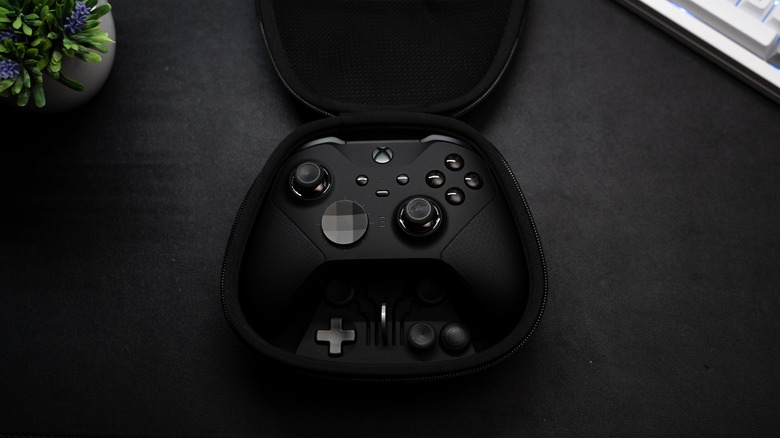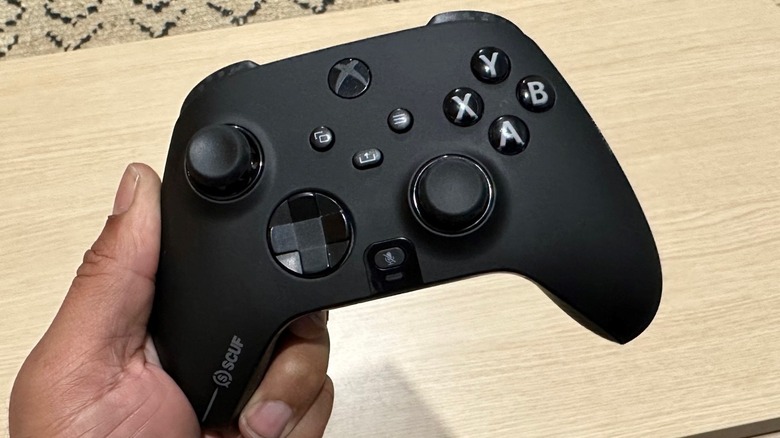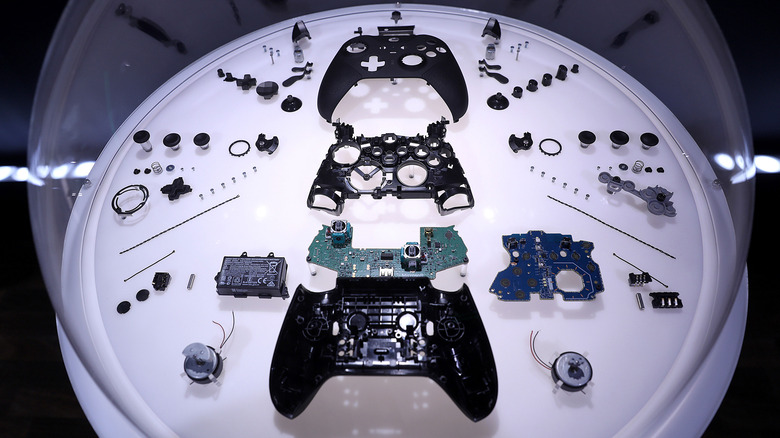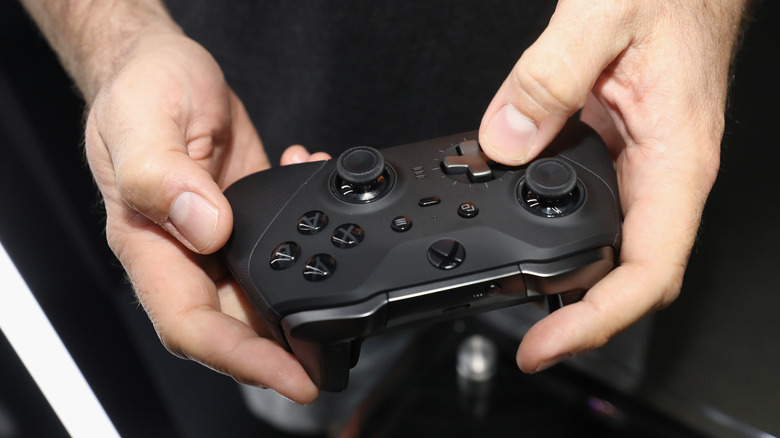Features We Want To See In An Xbox Elite Series 3 Controller
The Xbox Elite Wireless Controller series is targeted at gamers who want to do everything they can to get an edge on the competition. First launched in 2015, the original Xbox Elite Wireless Controller brought with it numerous customizable features that a gamer could individually tailor to suit their playing style, including many that weren't available on a regular Xbox controller. This included interchangeable thumbsticks and d-pads, detachable paddles on the underside of the controller, rubberized grips, and trigger locks to reduce reaction time.
Following the success of the original model, a fully revised version called the Xbox Elite Wireless Controller Series 2 was launched in 2019, which Microsoft claimed brought over 30 new features to enhance gaming performance. These included the ability to adjust the tension of the thumbsticks, shoot more quickly with shorter hair trigger locks, and improve how the controller feels in the hand with a wrap-around rubberized grip. It is expensive, however, and Microsoft has subsequently introduced a more affordable model it calls the Elite Wireless Controller Series 2 – Core. This model drops the detachable paddles, interchangeable parts, and case, to reduce the starting price, with the "missing" components now sold separately.
Despite the newer controllers' improved features and usability, here's what we'd like to see in an Xbox Elite Series 3 Controller.
Weighing up customizability
In the minds of many gamers and reviewers, the Xbox Elite Wireless Controller Series 2 is the best gaming controller on the market. However, there is one major drawback of the Elite Series 2 that's hard to overlook — its heft. Where a regular Xbox Series X|S Wireless Controller weighs in at around 10.12 ounces (287 grams), the Elite Series 2 controller tips the scales at around 12.16 ounces (345 grams). This is substantially heavier and while not a deal breaker by any means, it does mean that it could start to cause fatigue over longer gaming sessions. Removing the various accessories including the paddles can knock off half an ounce in weight, but it does defeat the purpose of owning one from the standpoint of pure customizability.
Our favorite Elite Series 2 alternative is the Scuff Instinct Pro. Even though it boasts just as much, if not more, customizability than the Elite Series 2, it tips the scales at just 9.87 ounces (280 grams) — this is a whopping 20% lighter than the Elite Series 2 and also lighter than a regular Xbox Series X|S controller. You can even order the Scuff Instinct Pro without the rumble motor, knocking another 30% off its weight and making it up to 50% lighter than the Elite Series 2. The Scuff Instinct Pro shows that you can have your cake and eat it too, and we'd love to see Microsoft slice some weight off an Elite Series 3 controller.
Build quality improvements
As much as the Elite Series 2 improved on the original with a raft of customizability features, one area where it falls down is in its build quality. In fact, this is an unfortunate continuation of build quality concerns that arose with the original Elite Wireless Controller. While it seemed at first that Microsoft had addressed these issues, it was forced into launching an extended warranty replacement program.
According to the company, only a "small percentage" of users have experienced problems, but it's been enough of an issue that the company has extended the warranty from 90 days after purchase to a full year (via The Verge). Issues that users have experienced include the dreaded stick drift, along with buttons getting stuck or not responding to input. Hopefully, when the Elite Series 3 eventually launches, Microsoft will have finally ironed out its quality control issues. Third time's a charm?
Other 'nice to haves'
While the Elite Series 2 added a textured grip, an improvement on the standard smooth surface finish, it still isn't as rubberized as the Scuff Instinct Pro. As a result, while it is grippier than a regular Xbox controller, it isn't as grippy as we'd like. When playing longer gaming sessions, it isn't unusual for hands to become a little sweaty and having a reliable, stable grip on your controller helps to ensure that you have the best chance of beating a boss or an opponent.
Another controller from which Microsoft could draw some inspiration from for its Elite Series 3 controller is the Thrustmaster ESWAP X PRO, which uses hot swappable modules for its sticks and d-pad. While most gamers are comfortable with the default stick and d-pad layouts of the Elite Series 2, it would be nice to have the option to switch things around to suit particular games or gaming styles. It would also make things easier for those coming across from Sony PlayStation consoles.
Microsoft should also consider switching to hall effect joysticks instead of traditional potentiometer-based joysticks that rely on physical contact with sensors. The latter naturally results in wear, and, inevitably, joystick drift where phantom inputs negatively affect game play. In contrast, hall effect joysticks use a magnetic system that does not involve any physical wear and tear. Not only can hall effect joysticks potentially provide greater accuracy, they should also prove to be more durable in the long run.



